Clove hitch knots are two half-hitch knots around an object that you can use as a crossing or binding knot. Clove hitches are more secure when you use them as a crossing knot.
You can tie a clove hitch knot to a fixed support or a carabiner for rock climbing.
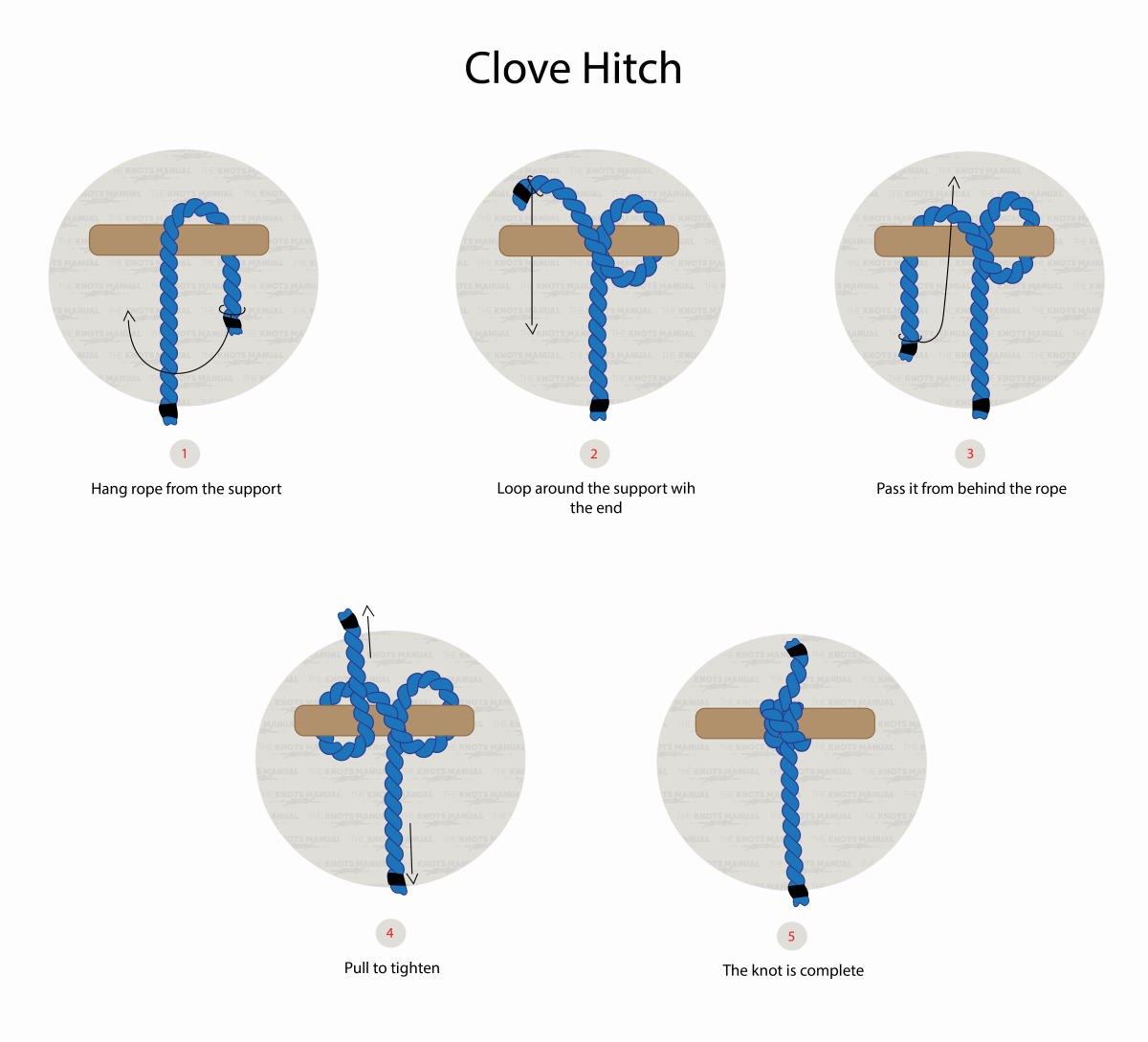
Clove hitch knots have been around since before the 16th century. They have many uses in rock climbing, boating, camping, and theater. Experts warn against using a clove hitch on its own because it can slip and bind. It is more secure and useful when combined with other knots.
How To Tie A Clove Hitch Knot To A Fixed Support
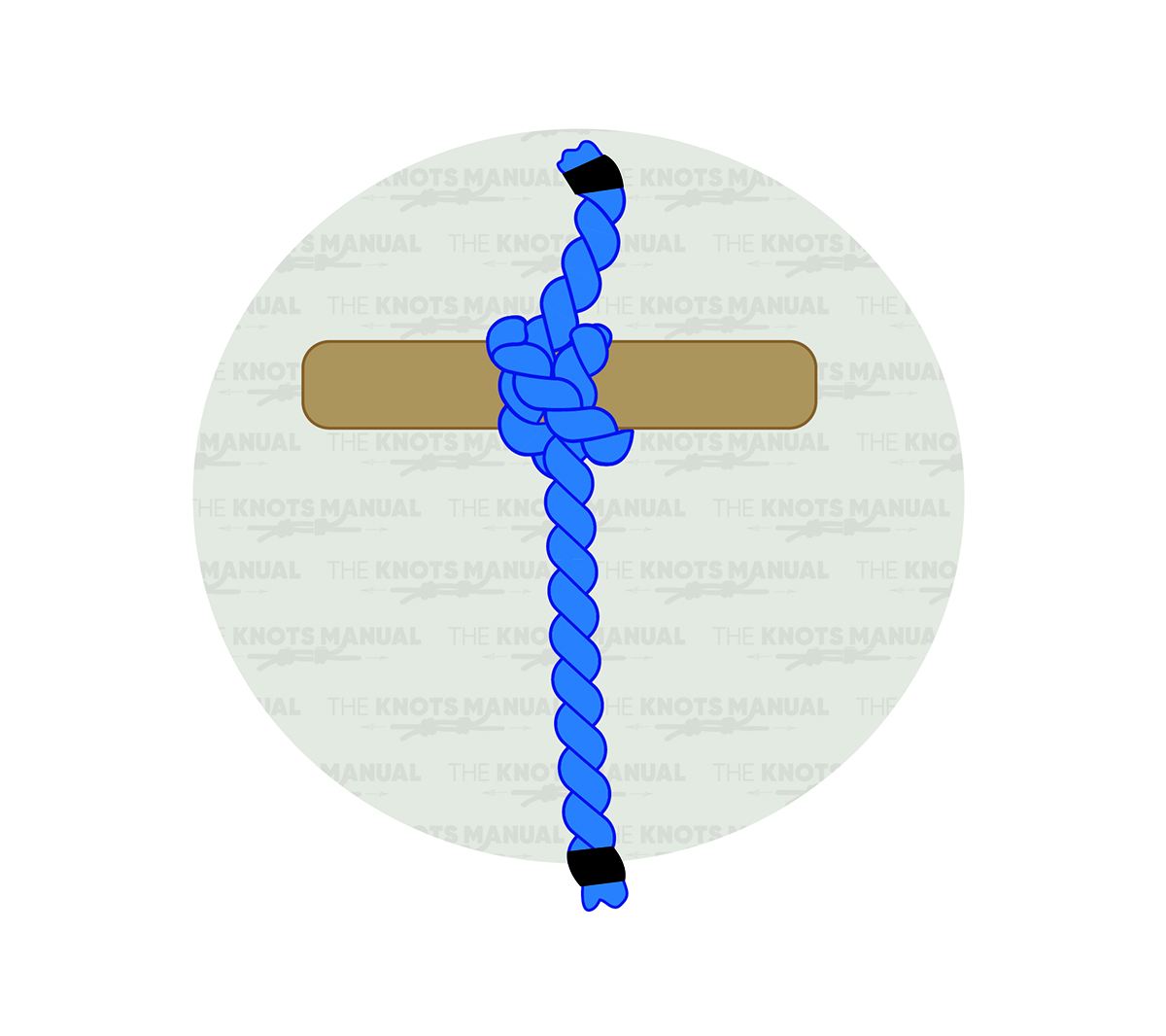
To tie a clove hitch to a fixed support, follow these five simple steps:
Step 1:
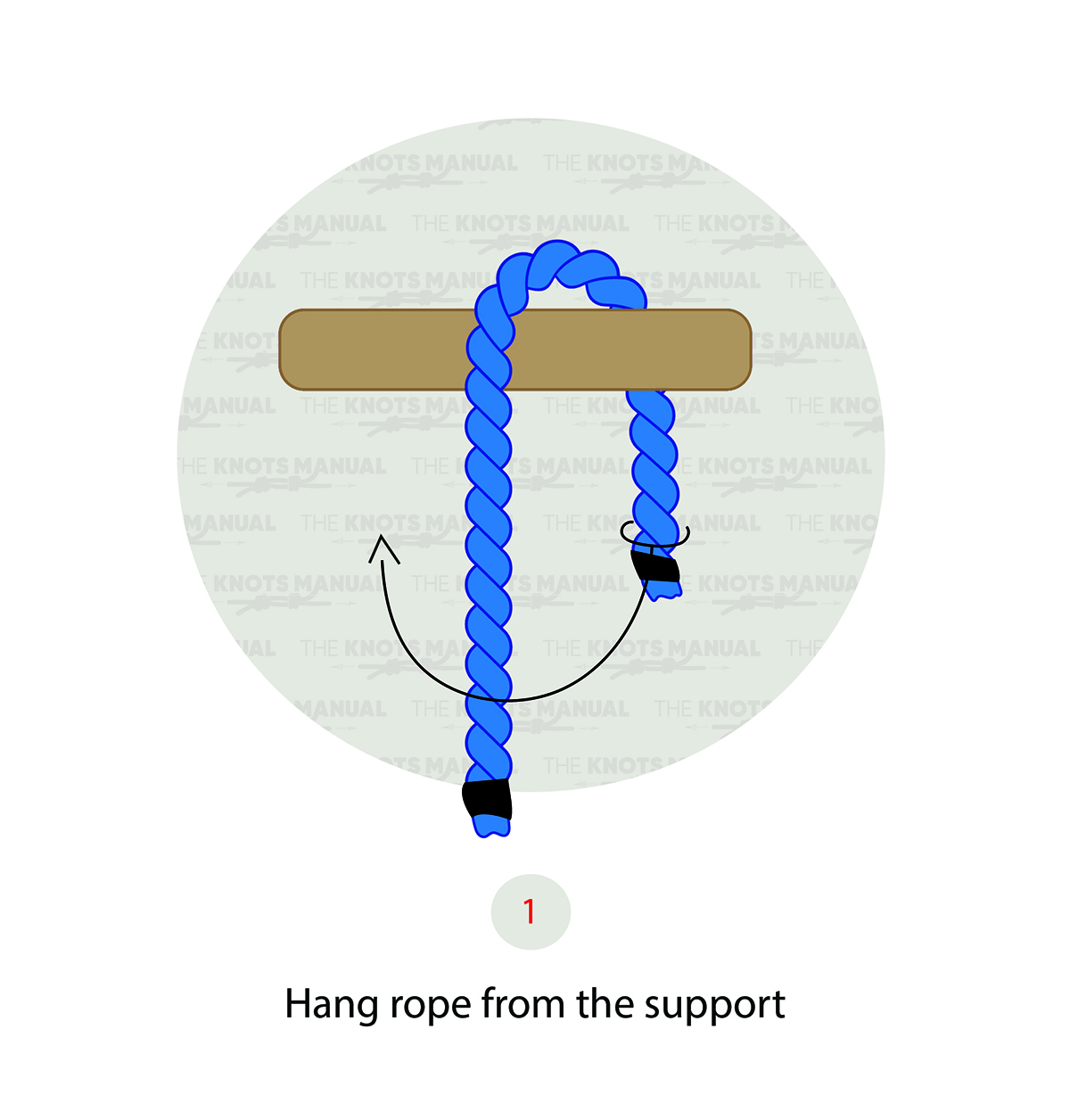
Hang the rope from the support (object).
Step 2:
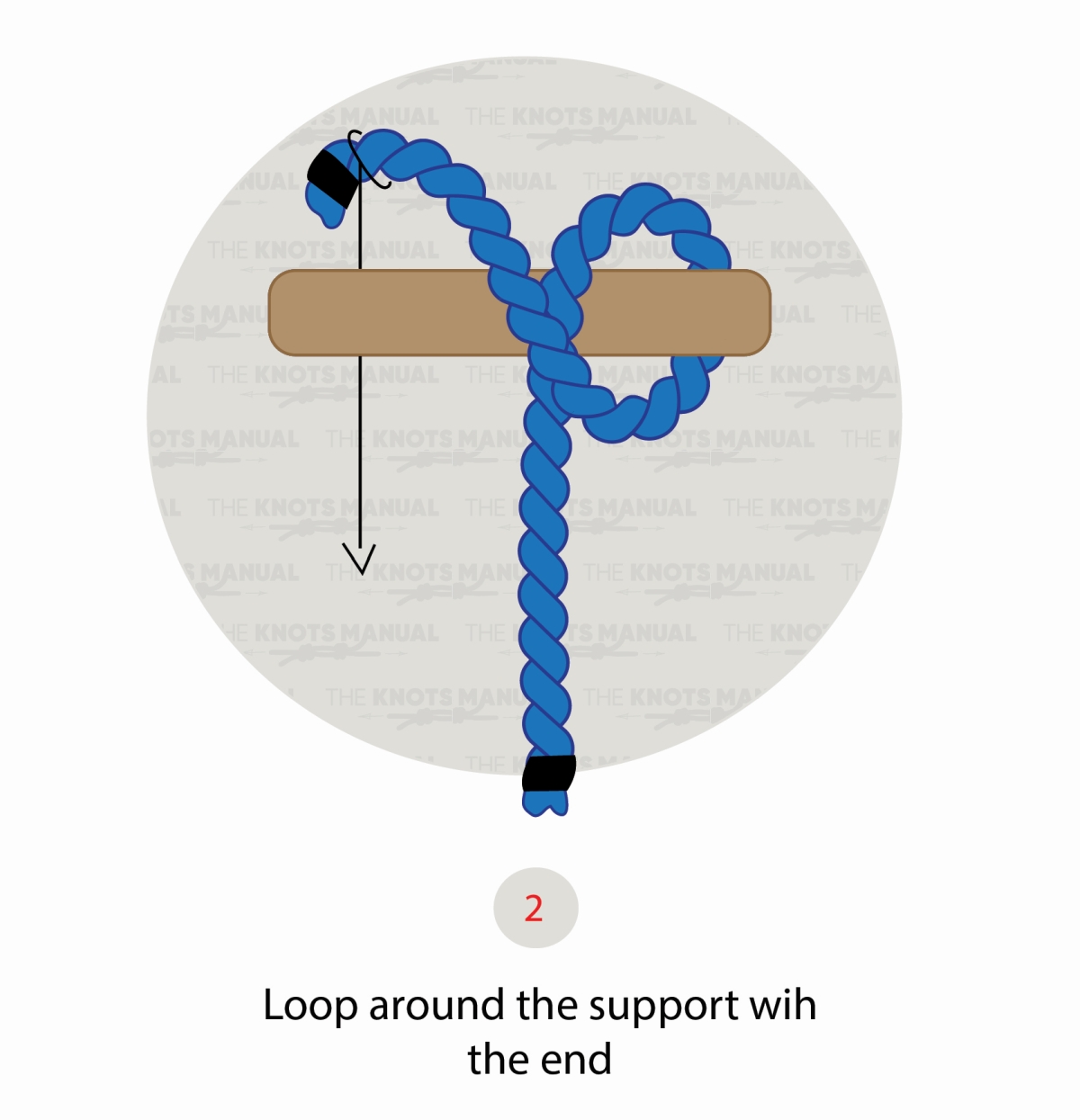
Loop the end of the rope around the support (object).
Step 3:
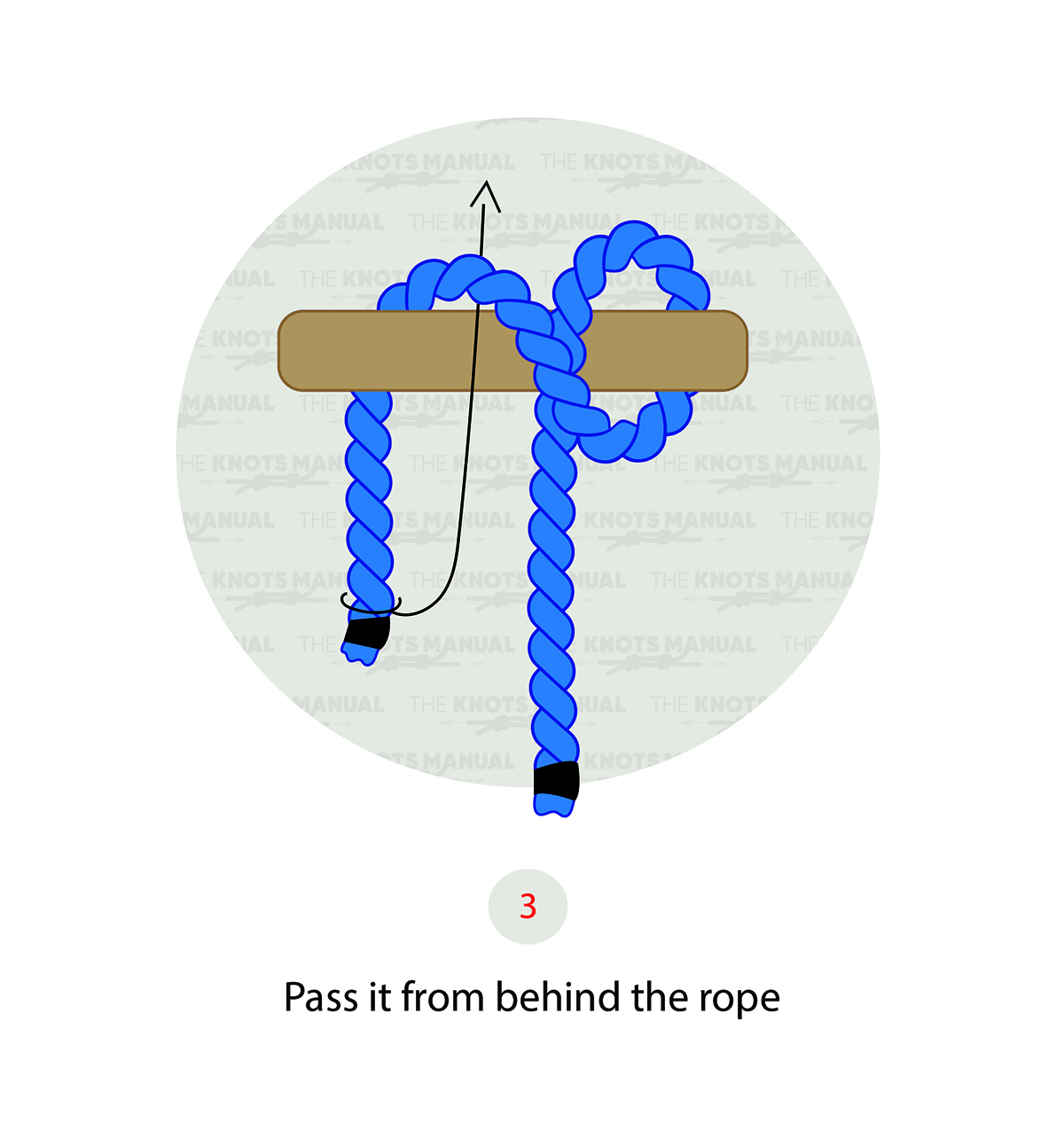
Pass the end of the rope from behind the rope.
Step 4:
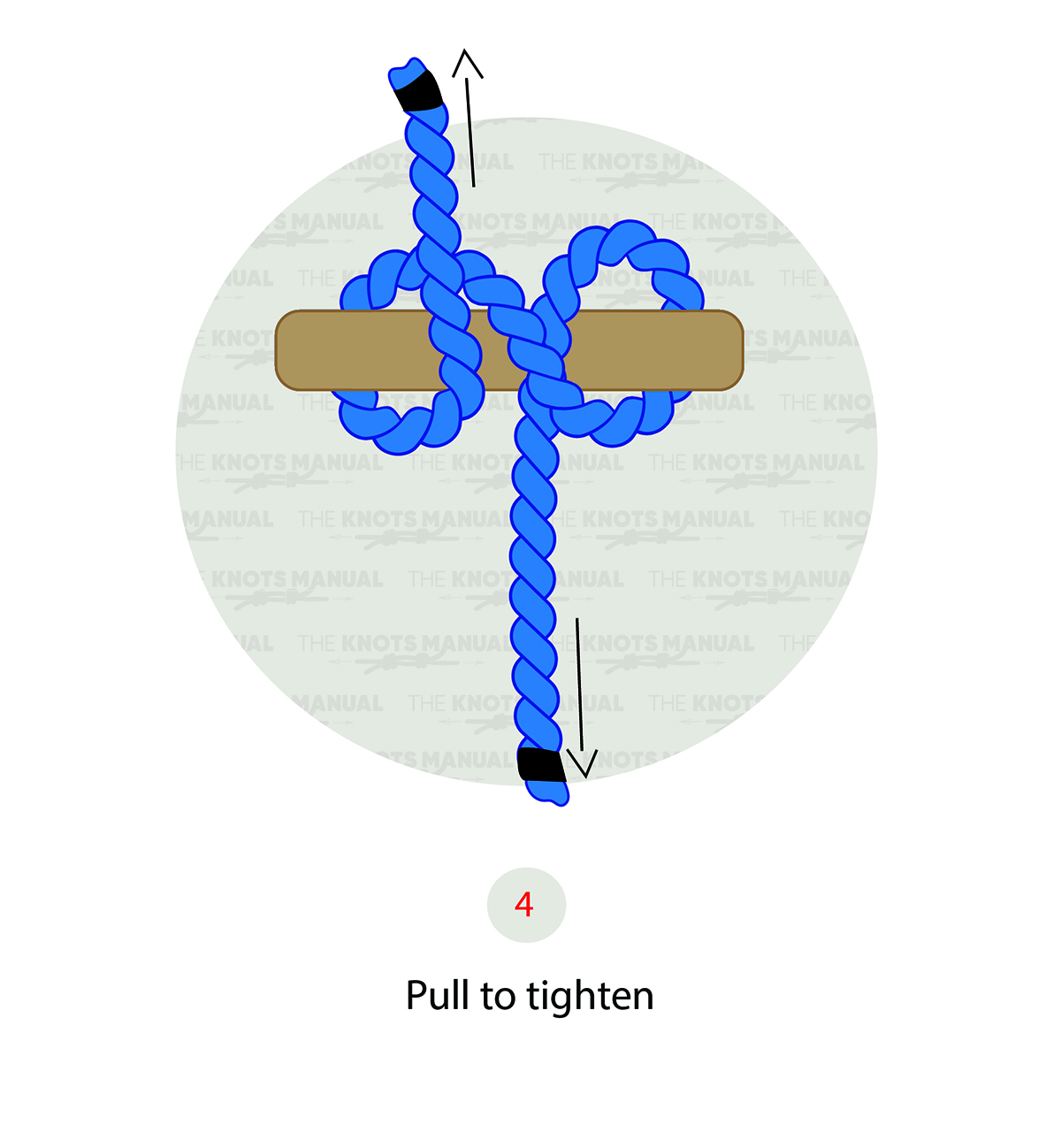
Pull both ends of the rope to tighten.
Step 5:
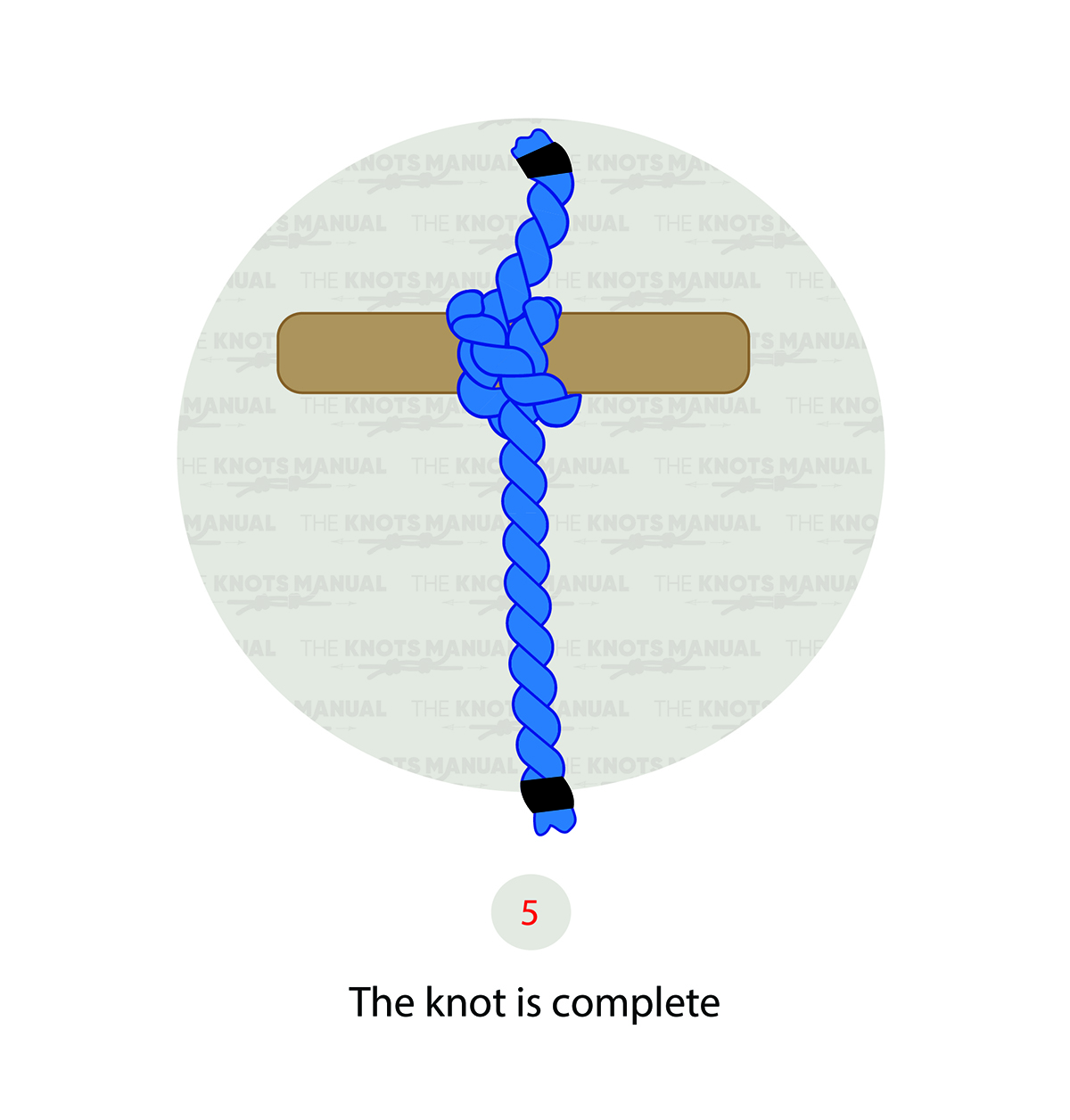
The clove hitch knot is complete.
How To Tie A Clove Hitch Knot To A Carabiner
To tie a clove hitch knot for a carabiner, follow these seven simple steps:
- Create a loop with the rope’s working end on top of the standing line.
- Make a second identical loop next to the first loop.
- Hold each loop in either hand and keep the rope’s working end on top.
- Move the loop in your right hand so that it’s behind the loop in your left hand.
- Attach the carabiner through both loops.
- Screw the gate shut on your carabiner.
- Pull your rope’s standing and working ends simultaneously to tighten the knot.
How To Tie A Clove Hitch With One Hand
Follow these steps to tie a clove hitch with one hand:
- Hook the rope over your thumb, allowing the rope to dangle on both sides.
- Using the ring finger, pull the outer rope in and back.
- Join the ring and little finger with the middle finger.
- Rotate your hand around the front of the rope, so your index finger goes under the rope and then points upward.
- Join the index finger and the thumb to gather the final knot.
Clove Hitch Uses
Clove hitches are helpful because their running ends are adjustable. You can easily change their positions without untying the knot. They are so simple to tie that you can make the knot one-handed.
Clove hitches are most useful when tied around a round object like a pole.
The adjustable nature of clove hitches makes them a good choice for bearing loads. The rope can adjust with the weight. Thicker rope material is best for clove hitches carrying loads. Thinner material is hard to untie after bearing heavy loads.
Clove hitches are helpful for:
- Use as a crossing knot
- Rocking climbing
- Theater
- Starting & finishing a lashing
- Hoisting
- Camping
- Decorative macrame
- Tying bandages like arm slings
- Securing boat fenders
- Tying hammocks
- Setting up teepees
- Aircraft wiring
Cautions
The clove hitch knot is less secure when tied around a rectangular or square-shaped post.
In some instances, the adjustable nature of the clove hitch can also be a problem. Some rope materials allow the clove hitch to slip when you add a load. Experts warn against using the clove hitch on its own.
For instance, boaters should not attempt to moor their vessel with a clove hitch alone. Under normal conditions, a clove hitch may be effective. Harsh winds can make the load of the boat too much for the clove hitch to handle.
Another problem that you may run into is binding. You can add two half hitches to your clove hitch to make it more secure, but it causes excess strain on the initial knot. The clove hitch becomes so tight that it’s nearly impossible to untie.
Rockclimbing
Climbers use clove hitches for rock climbing, where their adjustable nature is advantageous. Climbing rope can slip slightly to allow the climber to adjust themselves. Locking carabiners stop the rope from slipping after a certain point. So, it’s safe and valuable for the climber.
Climbers tie a clove hitch around a carabiner, and the load pulls on the rope’s end closest to its spine. Clove hitches are suitable for belaying and rappelling. They also use clove hitches as a master point for a personal or fixed anchor.
Camping
Clove hitches’ quick and easy nature makes them useful for campers and backpackers. You can use a clove hitch to secure your food and bags in a tree when you set up camp.
Boating
Experts don’t recommend using clove hitches for mooring vessels. They can secure boat fenders. Boaters use clove hitches with two half hitches to tie their boat fenders to a railing. Boat fenders aren’t critical to the operation of a boat, so it’s safe to use clove hitches to secure them.
Theater
Theater technicians find clove hitches useful for adjusting stage curtains. Using a clove hitch on the curtain rod allows technicians to adjust the height of the rod by rolling the knot.
Other theater technicians suggest using a round turn and two half hitches instead. They have experienced slips with the clove hitch and say the latter approach is more secure.
The History Of The Clove Hitch
The clove hitch first got its name in 1769 when Falconer wrote it in his dictionary. The knot is much older than its name, having been used as early as the 16th century. Our ancestors used clove hitches for ratlines. There are early paintings and sculptures depicting the use of the knot.
10 Knots Similar To The Clove Hitch
Double Clove Hitch: Add two extra rope turns to modify the clove hitch. The modification increases the knot’s strength, making it safer to use. Windsurfers often use this knot to join their mast and boom.
Slip Clove Hitch: Rather than passing the end of the rope behind the middle of the rope, you pass a bight of rope.
A Round Turn and Two Half Hitches: A valuable knot for attaching a load to a fixed object like a piling or rail. The round turn with two half hitches is more secure than a traditional half hitch. It reduces the initial strain of the load and makes it easier to tie half hitches.
Rolling Hitch: A rolling hitch attaches a rope to another rope, rod, or pole. The rope pulls lengthwise along the attaching object. Rolling hitches help rig a stopper on a sailboat. It relaxes the tension on the sheet to clear winch or block jams.
Bowline: A simple knot that forms a fixed loop on the end of a rope. Bowline knots are ancient and are famous for their ease of tying and untying.
Cleat Hitch: A cleat hitch is any knot that secures a rope to a cleat. The cleat hitch has four variations: horn, cam, jam, and clam cleat.
Constrictor Knot: A simple and secure binding knot. It is extremely difficult to untie once you’ve tightened it. It is like a clove hitch, but one end of the rope passes under the other to form an underhand knot under a riding turn.
Icicle Hitch: A knot that connects a post that is bearing weight. The weight applied to the rope runs parallel to the post. Icicle hitches are very secure and can hold a significant load on a smooth surface.
Taut-Line Hitch: An adjustable loop knot useful on lines under tension.
Taut-line hitches are useful for:
- Securing tent lines
- Climbing trees
- Tying down aircraft
- Securing vehicle loads
- Creating adjustable mooring
Timber Hitch: A timber hitch secures a single length of rope to a long object like a pole or branch. The knot is secure as long as tension remains on the knot, but you can easily untie it once you remove the tension. Loggers and arborists use the timber hitch.
FAQs
How Strong Is A Clove Hitch?
Clove hitches are not strong knots, and they can’t absorb shock. Only use clove hitches in a belay system or in combination with other knots, so loads are more spread out. The strength of a clove hitch is only about 60-70%.
Is A Clove Hitch Two Half Hitches?
Clove hitches and two half hitches are often confused. The two knots have one subtle difference. Two half hitches fasten around their standing part. A clove hitch fastens around the object.
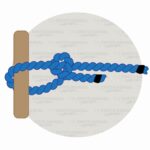
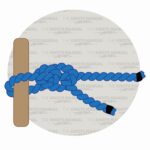



second to last graphic is incorrect